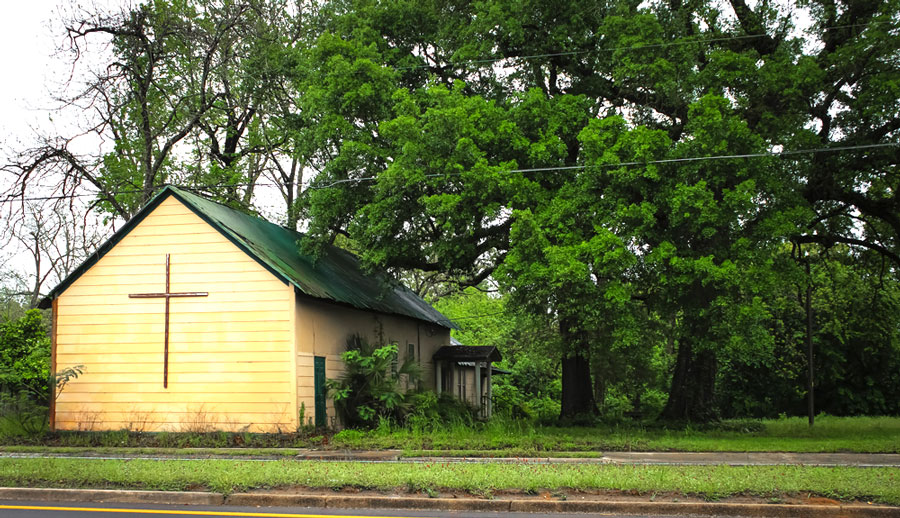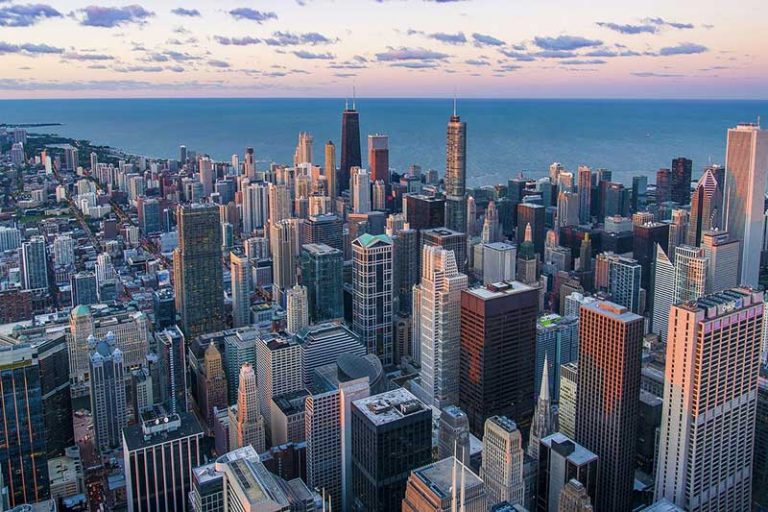What States Make Up the Bible Belt? (A Surprising Controversy!)

The Bible Belt is a region that is made up of at least nine states: North Carolina, Mississippi, South Carolina, Arkansas, Louisiana, Georgia, Oklahoma, Tennessee, and Alabama. Additionally, some definitions of the Bible Belt include other states, such as parts of Texas, Kentucky, and even Utah.
In this post, we’ll explore what the Bible Belt is, how it was formed, how it got the name “Bible Belt, as well as the controversy around what states are considered part of the Bible Belt.
Contents
Advertising Disclosure: What States is a for profit reference website, supported by advertisements. Thank you for supporting our mission to make geography fun for all!
What is the Bible Belt?
The Bible Belt is a term describing a region of the southern United States known for a high prevalence of religious beliefs, particularly Christian religious beliefs. The Bible Belt is one of the so-called belt regions of the United States.
The Bible Belt includes different belief systems: Methodists, Evangelical Protestantism, and Southern Baptists. One of the states in the Bible Belt, Mississippi, has the highest population of religious United States citizens.
What States Make up the Bible Belt?
All definitions of the Bible Belt include at least nine states: North Carolina, Mississippi, South Carolina, Arkansas, Louisiana, Georgia, Oklahoma, Tennessee, and Alabama. As the Bible Belt is not an official term, definitions of the region vary and some people also include all or parts of the states of Texas, Virginia, West Virginia, Kentucky, Missouri, Kansas, Florida, and even Utah in the Bible Belt.
You can see this expressed visually on the map below:

Really it comes down to the fact that the Bible Belt is a term used to describe a cultural region. Just as it is difficult to precisely pinpoint which states make up the deep South, or which states The boundaries of that region are not precise, nor do they perfectly align with the boundaries of the various United States.
For example, certain parts of the Florida Panhandle are culturally and religiously very similar to the nearby states of Mississippi and Alabama, which are prototypical Bible Belt states. Other parts of Florida, such as the Greater Miami region, very clearly do not conform to the characteristics found in the Bible Belt.
In short, unlike better-defined regions of the United States (like New England), the Bible Belt is an amorphous region that does not perfectly match state boundaries.
🏰 Read Next: What is Florida Famous For?
History and Trivia About the Bible Belt Region

The Bible Belt region is characterized by the high rate of individuals who follow organized religious beliefs and regularly Christian places of worship. The Bible Belt can be described in several ways, but it primarily overlaps with the American South.
In the 17th and 18th centuries, the area that today is referred to as the Bible Belt region was mainly a center of Anglican or Episcopalian beliefs. Things started changing in the 19th century when other denominations, especially the Southern Baptists, began increasing in numbers. Evangelical Protestantism grew to become the central belief system dominating the Bible Belt region by the 20th century.
When was the term “Bible Belt” first used?
The term “the Bible Belt” was coined by H.L. Mencken, an American writer, and satirist, in 1925 while he was in Dayton, Tennessee reporting on the Scopes Monkey Trial. The first time Mencken used the phrase “Bible Belt,” it was in a pejorative manner while writing for the Baltimore Sun.

In subsequent compositions, Menchken referred to different parts of the region with quotes like “Jackson, Mississippi in the heart of the Bible and Lynching Belt” and “the Bible and Hookworm Belt.” (Source). The phrase was meant in a derogatory way to capture the racist tendencies towards African Americans, lack of educational attainment among the poorer white population, and perceived social inferiority by those in the US’s eastern region.
Evolution of the Phrase “The Bible Belt”

Over the subsequent decades of the 1900s, the term Bible Belt slowly gained popularity in academia and popular media in American South as a way to refer to the socially conservative part of the country with higher church attendance rates, above the national average religious belief adherence, and conservative social and political views.
Oklahoma was named the capital city of the ten states that comprise the Bible Belt in the Saturday Evening Post in 1948. According to Wilbur Zelinsky, by 1961, the Bible Belt was defined as a region where the main predominant religious groups were the evangelical Christians, Methodists, and Southern Baptists.
Zelinsky said the Bible Belt region stretches from southern Virginia and West Virginia to southern Missouri. It continues through the south to northern Florida, and in the north to Texas. Due to the high percentage of Catholics in the population, Louisiana was not included in the region Zelinsky outlined. Central and Southern Florida also weren’t included, nor was the southern region of Texas.
“Viewing the Bible Belt” was a definitive article published in the Journal of Popular Culture about the Bible Belt in 1978 by geographer Stephen Tweedie from Oklahoma State University.

The article mainly defined the television viewing habits on Sundays for five different religious evangelical television programs. The region defined by Stephen Tweedie exceeded the one mapped by Zelinsky. Tweedie’s area included parts of Kansas, Dakota, and Nebraska.
Another thing is research changed is; the Bible Belt was divided into two main regions; the Eastern and Western regions. The Western core region of the Bible Belt, as defined by Tweedie, mainly focused on Oklahoma, Tulsa, Arkansas, and Little Rock. The Eastern core region included the major populations of North Carolina and Virginia.
The geographer also mapped other core regions surrounding Oklahoma, Wichita Falls, Dallas, and Kansas to Lawton. Stephen Tweedie chose Oklahoma City to be the capital of the Bible Belt, but other researchers and commentators differed by choosing other regions. Jackson, Mississippi, was selected by H.L. Mencken to be the capital. Other suggested locations were Tennessee, Missouri, Abilene, Charlotte, Nashville, Memphis, Texas, Springfield, and North Carolina.
👉 Read Next: 10 Weird and Crazy Laws in Georgia
The Bible Belt Today

The Bible Belt continues to contain those states that have the highest numbers of Christian religious people in the United States.
Mississippi is generally recognized as the state with the highest number of religious Americans. Almost 59% of the Mississippi population identifies as being extremely religious compared to other states. The current top 10 list includes Alabama, Georgia, North Carolina, Arkansas, Mississippi, Oklahoma, Louisiana, Tennessee, South Carolina, and Utah.
Utah is somewhat unique in that it is the only state among the USA’s most religious that does not lie in the southern region of the country. Owing to its large population and history as the center of the Church of Jesus Christ of Latter Day Saints, Utah nonetheless has one of the highest religiosity ratings in the USA. For this reason, some definitions of the Bible Belt do include Utah to reflect this.
Politics in the Bible Belt
The Bible Belt region is currently home to a higher proportion of individuals who subscribe to conservative values. Hence, it’s a politically conservative region with a relatively larger portion of the population who vote Republican. Over the past few decades, Republican candidates in local and national races have found strong support in the “red states” of the Bible Belt region.
These red states include Texas, Oklahoma, Mississippi, South Carolina, Alabama, and Kansas. Those states have always supported Republican candidates in all presidential elections since 1980. Despite other states in the Bible Belt also voting Republican, Bill Clinton, a Democrat from Arkansas, swayed the region’s votes during his previous Presidential campaigns.
Mathew Zook and Mark Graham did some research in 2010. One of the sources they used was the online place-name data. The intention was to identify how predominant the word “church” was across the Bible Belt. The results showed a map of the Bible Belt region, just like it was defined years back by Stephen Tweedie. However, interestingly, this map goes all the way into the Dakotas!
Bible Belt FAQs
Is Utah A Bible Belt State?
While Utah is traditionally not considered a part of the Bible Belt, some definitions of the Bible Belt include the state of Utah as part of the region. This is because Utah, home to a large population of Latter Day Saints, generally ranks as one of the most religious states in the United States.
Why Is The Bible Belt Called The Bible Belt?
The Bible Belt earned its nickname because of the high degree of religiosity and adherence to Christian literalism in the southern region of the United States that forms the Bible Belt.
Is Georgia In The Bible Belt?
Georgia is a state is widely considered to be a part of the Bible Belt, owing to the high degree of Christian religiosity as measured in multiple surveys. Although definitions of the Bible Belt’s boundaries do vary, virtually every definition includes Georgia as part of the Bible Belt.
What Does It Mean To Live In The Bible Belt?
When someone says they live in the Bible Belt, they mean that they reside in the region of the United States, located in the south, colloquially referred to by the name for its high degree of religiosity.
***
That’s it for this guide to what states make up the Bible Belt. We hope you learned something!
👉 For more interesting geography trivia, be sure to check out our article on What States are in Tornado Alley?






